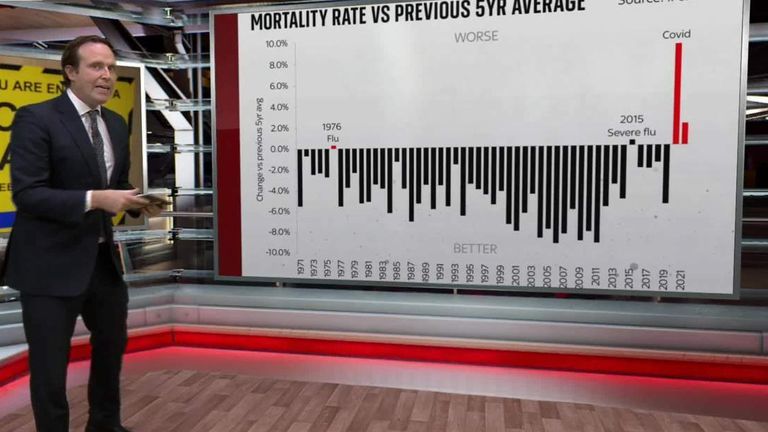COVID-19: Asymptomatic people who get positive lateral flow test results no longer need confirmatory PCR from today

People without COVID symptoms but who test positive for the virus on a lateral flow device will no longer need to take a PCR test to confirm their result while they self-isolate.
The temporary measure will apply from today in England with health chiefs saying that, while infection rates remain high across the country, the vast majority of people with positive lateral flow results can be confident they have coronavirus.
The new approach was announced last week by the UK Health Security Agency and has now come into force.
It means asymptomatic people in England who test positive via a lateral flow device (LFD) should self-isolate immediately and will not need to get a confirmatory PCR result.
Lateral flow tests should be taken by people who do not have COVID symptoms.
Anyone who develops one of the three main COVID symptoms – a high temperature, a new continuous cough, or a loss or change to your sense of smell of taste – should self-isolate and still get a PCR test.
UK records 142,224 new cases and 77 more coronavirus-related deaths, daily figures show
Those with symptoms should self-isolate even if they have had a recent negative lateral flow test, as rules for symptomatic people have not changed.
‘Tried and tested approach’
Today’s change for asymptomatic people who test positive on lateral flow devices comes after confirmatory PCR tests were previously temporarily paused in January last year, before being reintroduced in March 2021 as COVID rates fell again.
UKHSA chief executive Dr Jenny Harries said: “This is a tried and tested approach.
“With COVID cases high, we can confidently say lateral flow tests can be used to indicate COVID-19 without the need for PCR confirmation.
“If you test positive on an LFD, you should self-isolate immediately and register your result to allow contact tracing to take place.
“It also remains really important that anyone experiencing COVID-19 symptoms self-isolates and takes a PCR test via gov.uk, or by phoning 119.
“I’m really grateful to the public and all of our critical workers who continue to test regularly and self-isolate when necessary – along with other practical and important behaviours to limit transmission of the virus – as this is the most effective way of stopping the spread of infection and keeping our friends, families and communities safe.”
More on this story:
PCR test changes hint at how govt intends to ‘live with COVID’
When will the UK ‘transition from pandemic to endemic’?
Exceptions to the rules
There are some exceptions to the changed testing rules, including:
• Those who are eligible for the £500 self-isolation support payment will still be asked to take a confirmatory PCR test if they receive a positive lateral flow result, before they can access financial support.
• People participating in research or surveillance programmes may still be asked to take a follow-up PCR test, according to the research or surveillance protocol.
• Around one million people in England who are at particular risk of becoming seriously ill from COVID-19 and who have been identified by the NHS as being potentially eligible for new treatments. They will be receiving a PCR test kit at home by mid-January to use if they develop symptoms, or if they get a positive lateral flow test result, as they may be eligible for new treatments if they receive a positive PCR result. People in this group are advised to use these priority PCR tests when they have symptoms as it will enable their tests to be prioritised in laboratories.
Under current guidelines, anyone who tests positive for COVID-19 will be able to leave self-isolation seven days after the date of their initial positive test.
This is if they receive two negative lateral flow test results, taken 24 hours apart, on days six and seven.
The requirement for a confirmatory PCR test for asymptomatic people who test positive on a lateral flow test had already been dropped in Scotland, Wales and Northern Ireland.
Source: Read Full Article


